#history of yoruba
Text

70 notes
·
View notes
Text

Ilê Aiyê is a carnival block located in Salvador, Bahia, Brazil. Carnival blocks, carnaval blocos or blocos de rua are street bands that mobilize crowds on the streets and are the main popular expression of Brazilian Carnival. The name Ilê Aiyê stems from the Yoruba language: Ilé - home; Ayé - life; which can be loosely translated as 'earth'. It was founded in 1974 by Antônio Carlos “Vovô” and Apolônio de Jesus, making it the oldest Afro-Brazilian block.
#lê Aiyê#Carnival Block#Band#Brazilian Carnival#Yoruba#Salvador de Bahia#Brazil#Culture#History#Tradition#Afro Brazillian#African Descent
77 notes
·
View notes
Photo
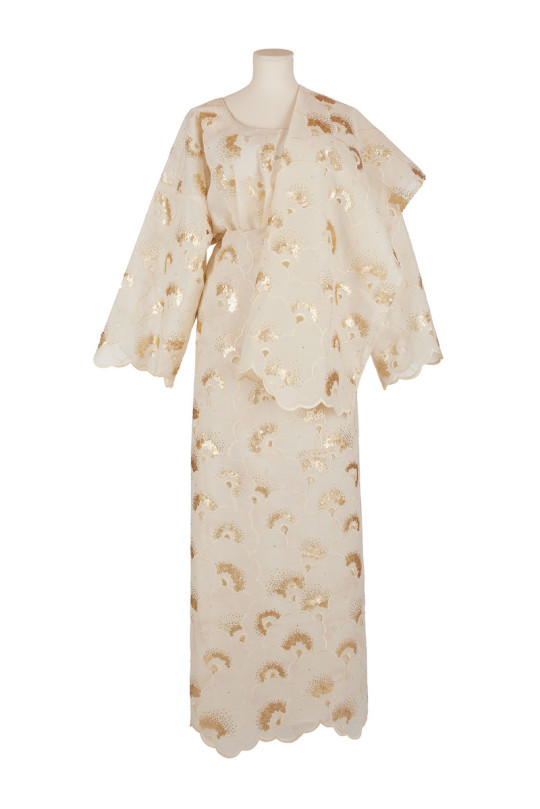
Yoruba Woman’s Ensemble: Buba (blouse), Iro (skirt), & Ipele (shoulder wrap)
Nigeria
Before 2018
Royal Pavilion & Museums, Brighton & Hove (Accession no.:R6047/1-3)
#ensemble#dress#fashion history#yoruba#nigeria#traditional fashion#traditional clothing#non western fashion#africa#gold#white#aso oke#20th century#21st century#1990s#2000s#2010s#royal pavilion and museums#brighton and hove museums and art galleries
342 notes
·
View notes
Text



#black dark academia#dark academia#poc dark academia#noir library#books#bibliophile#currently reading#bookblr#books and reading#booktok#yoruba#religious studies#history#black spirituality
100 notes
·
View notes
Text

"Ju Ju Doctor," Border Cities Star. June 1, 1934. Page 9.
----
DR. OGUNTULA SAPARA
----
Described by Gordon Sinclair as being the most successful ju ju doctor in all West Africa; is a medical graduate of St. Thomas' hospital, London, Eng. He is shown here from a photograph which Sinclair took during his present trip to Africa.
[Pretty typically racist caricature of a fascinating person, who led the fight against smallpox and bubonic plague in Nigeria, was a leading public health figure there, was educated in Scotland and England with multiple degrees. Read more here.]
#oguntola sapara#lagos#gordon sinclair#yoruba#colonial nigeria#british empire#public health#epidemic histories#anti-pandemic acts#colonial medicine#interwar period
23 notes
·
View notes
Text
Afrobrazilian Candomble priestess embodying Oxum

You will forever be a pitiful victim-mentality slave until your concept/image of the Supreme Being is one that comes from your Westcentral African ancestry. Deity must reflect you. This is the mirror of Oshun.
#Osun#Palo#Yoruba#(Afrobrazilian Candomble priestess embodying Oxum)#https://x.com/ancientkemite/status/1702779222580703412?s=20#oshun#yoruba gods#african history#brazil#candomble
82 notes
·
View notes
Text
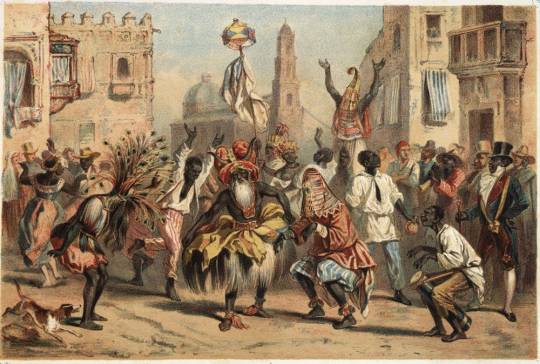
Long before it arose in New York City and became an influential style of music around the world, salsa music has its seeds in African rhythms and traditions that came to the Caribbean through the slave trade. Centuries of enslavement caused many cultural changes in Cuba, including the music that led to salsa.
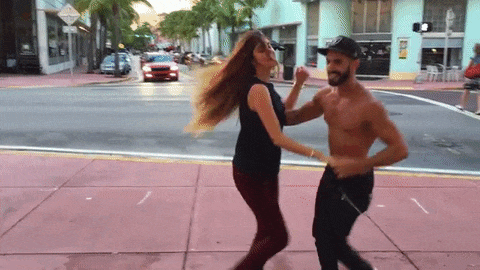
Some people know Bobby Day’s 1958 “Rockin’ Robin” or Michael Jackson’s remake but the origin of the song goes back to the days of slavery.
The majority of the Africans that were enslaved and brought to the Americas were of West African descent where the drum was used as a form of communication. In the Americas, enslaved Africans used the drum in the same way — communicating with the enslaved on distant plantations and ultimately planning uprising.
The enslavers caught wind of this and enacted a ban.
It is absolutely necessary to the safety of this Province, that all due care be taken to restrain Negroes from using or keeping of drums, which may call together or give sign or notice to one another of their wicked designs and purposes.
— Slave Code of South Carolina, Article 36
That ban went down in 1740 and soon spread throughout Colonial America.
But the beat is in the heart of the African.
We soon found other ways to imitate the sound of the drum; stomping, playing spoons, washboards, or anything other household item. We also “slapped Juba” or played “hambone” where the body became an instrument where the player slaps their thighs and chest for the drum beat. (How did young boys in 1980s Park Hill, Denver know “Hambone?”)
Although we kept the beat, we lost the tradition, a cultural marker snatched away from us.
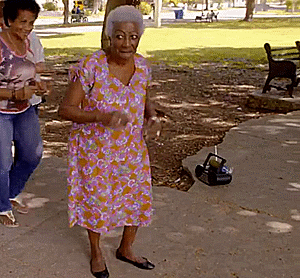
While the American enslaver worked feverishly to destroy any vestige of African culture, the Spanish enslaver of Cuba felt that it was in his best interest to allow the enslaved African to maintain his culture. In support of that, the Spanish allowed the Africans to organize Cabildos (or social groups) based on their nation of origin. Thus you had the Abakua (or Ekpe) from the nations known as Nigeria and Cameroon, the Madinga (or Malinke) from Sierre Leone, etc.
Our focus is primarily on the Lucumi, the Cabildo founded for the Yoruba of Benin and Nigeria. This lineage would be the cornerstone and origin point for what is now called “Salsa.” And what is this “Salsa?”
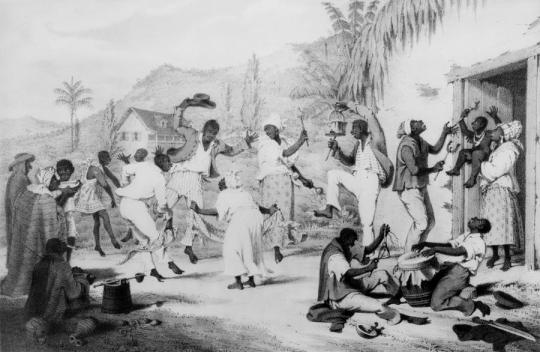
When we spoke of the drum being forbidden among the enslaved Africans in America, we forgot to mention that there was one place that didn’t enact that ban. That place was the port city of New Orleans, Louisiana — some even call New Orleans the Northernmost Caribbean city.
Similar in the way that the Spanish allowed for Cabildos in Cuba, the Louisiana enslavers permitted Sundays off and were okay with the dance and celebration so long as the enslaved African did so outside of the city limits in a place called Place des Negres (eventually known as Congo Square).
After the Civil War, Africans in America were able to get a hold of surplus brass instruments and shortly thereafter began composing music based on the popular music in the Caribbean at the time, the Cuban Habanero. Many say that this is one of the foundations of jazz music itself and the basis of the habanero, the tressilo, can be heard in second lines. Self-proclaimed jazz inventor, Jelly Roll Morton had this to say:
Now take the habanero “La Paloma”, which I transformed in New Orleans style. You leave the left hand just the same. The difference comes in the right hand — in the syncopation, which gives it an entirely different color that really changes the color from red to blue.
Now in one of my earliest tunes, “New Orleans Blues”, you can notice the Spanish tinge. In fact, if you can’t manage to put tinges of Spanish in your tunes, you will never be able to get the right seasoning, I call it, for jazz. Jelly Roll Morton
Because of those qualities, a young musical prodigy from Cuba, Mario Bauzá recognized the similarities between jazz and Cuban music straightaway. Bauzá fell in love with jazz having heard it on Cuban radio but it was his trip to Harlem, NYC in 1927 that convinced him that New York was where he wanted to be and jazz was the music that he wanted to play.
Bauzá returned to New York in 1930, immediately found work, eventually landing a gig in the Cab Calloway band. Here he brought on the legend in the making, Dizzy Gillespie, and the two became fast friends. Bauzá attempted to play his “native” music to many in the band but they dismissed it as “country” music. Gillespie, on the other hand, embraced it.
For the next eight years Bauzá played in predominately African jazz bands having seen discrimination from white Cubans. Yet he longed to start a group that incorporated the music from his home and his second love, jazz. He shot this idea to his childhood friend/brother-in-law and in 1939 at the Park Palace Ballroom the Machito Afro-Cubans would debut.
“I am Black, which means my roots are in Africa. Why should I be ashamed of that?” Bauzá said in reference to the name.
Bauzá replaced the drum kit, which at that time had only been around for 20 years, with the hard to find congas, timbales, and toms. “The timbales play the bell pattern, the congas play the supportive drum part, and the bongos improvise, simulating a lead drum”. In the 40s these drums could only be found at Simon Jou’s bakery, La Moderna, locally known in East Harlem simply as Simon’s.
Next, the Afro-Cubans needed a home and they would find that not in Harlem nor the Bronx, but instead in Midtown Manhattan, a club called the Palladium.

Salsa is a set of Afro-Caribbean rhythms fused with jazz and other styles. The truth is that its origins have always been much debated, although as a general rule it is mentioned that it comes from a fusion that came from Africa in the Caribbean when they heard European music and wanted to mix it with their drums
These origins focus especially on mambo, danzó, cha cha chá, guaracha and son montuno, later enriched with instruments such as saxophone, trumpet or trombone.
It was the Cuban exiles and those from Puerto Rico who popularized salsa in New York back in the 1950s. But it wasn't until the last third of this century that salsa dancing began to take off all over the world.
Cuba played a leading role in the origin of salsa. Already in the 1930s, melodies and rhythms from Africa were playing on the Caribbean island. Among them was the danzón, a musical piece acquired by the French who had fled Haiti.
History tells us that it was these first rhythms that were then mixed with rumbas such as guagancó and sonero to begin to create their own Afro-Cuban rhythms, including Afro-Cuban jazz, mambo, guaracha, Cuban son and montuno.
The exquisite melody of these new rhythms soon set in other Latin American countries. Puerto Rico and Colombia were the first to welcome these new sounds from the Cuban country.
However, it was not until their appearance in the United States, and more specifically in the Bronx neighborhood of New York, when these rhythms acquired a greater impact. It was the moment in which new musical instruments were added that today form an indissoluble part of salsa.
The great Cuban musicians who moved to New York along with the wave of these new rhythms created the famous tumbadoras, congas or son montuno, and were responsible for introducing trombones and guaracha.
The Origin of the Salsa Dance Steps
Once salsa was defined as a musical genre in the 1970s, the movements and steps of its dance were collected through a fusion of the African with the European.
These steps and movements of salsa fundamentally reflect the influence of the dances that the Africans brought to the Caribbean and the European dances that have been danced in Cuba since the 1930s.
So much so that the basic steps of salsa are precisely the same steps as the Cuban son, just as it also includes steps that can be seen in rumba, danzón and mambo.
The origin of these variants is in the regions where this style comes from, which are the ones that developed each dance, always under the same umbrella of the term salsa.
It is not surprising, then, that salsa is defined as the result of a series of social conditions and the evolution of a series of rhythms and melodies from Cuba, which were developed and achieved repercussion in the United States.
There are those who assure against this mixture that salsa is neither a rhythm nor a style, but rather a term that serves to represent all the music of Afro-Cuban origin that emerged in the first decades of the twentieth century.
In short, the origin of salsa has always been, and will continue to be, much discussed. American musician Tito Puente was right when he said, "Salsa doesn't exist. What they now call salsa is what I have played for many years, and this is mambo, guaracha, cha cha chá and guagancó".
#salsa#cuba#congo#nigeria#african#afrakan#kemetic dreams#brownskin#africans#afrakans#brown skin#african culture#afrakan spirituality#nigerian#nigerians#ghana#niger#cameroon#senegal#west africa#afro cuban#american#african american#african american history#american history#dance#african dance#congo dance#ekik#yoruba
20 notes
·
View notes
Photo

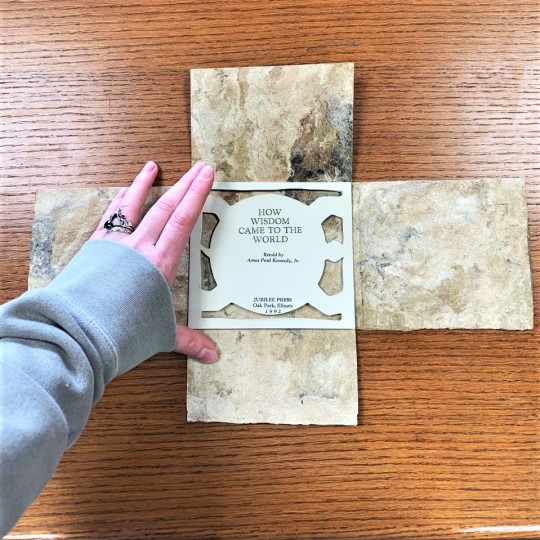
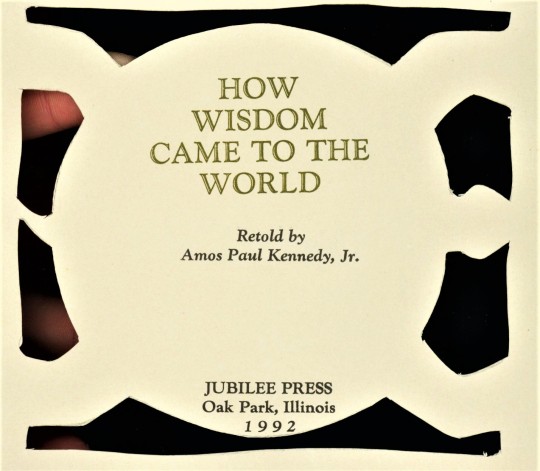
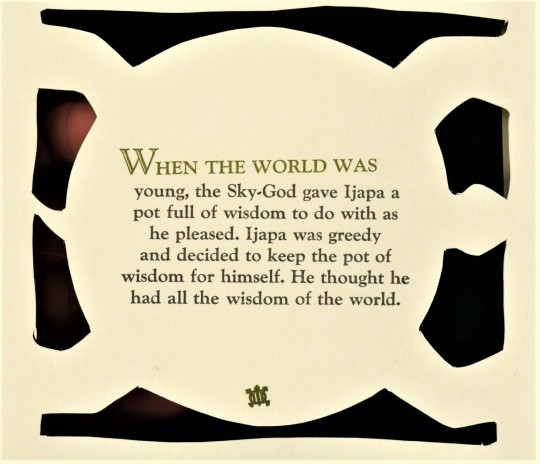
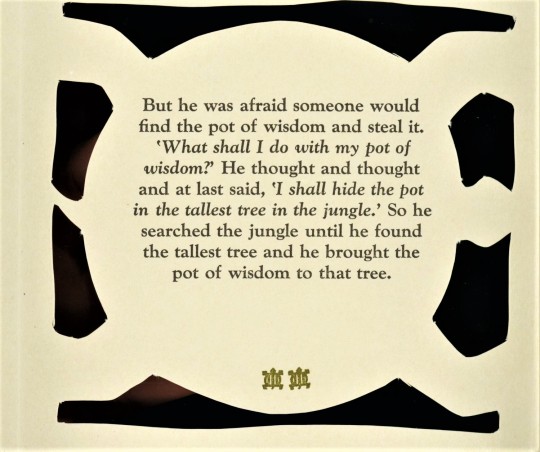

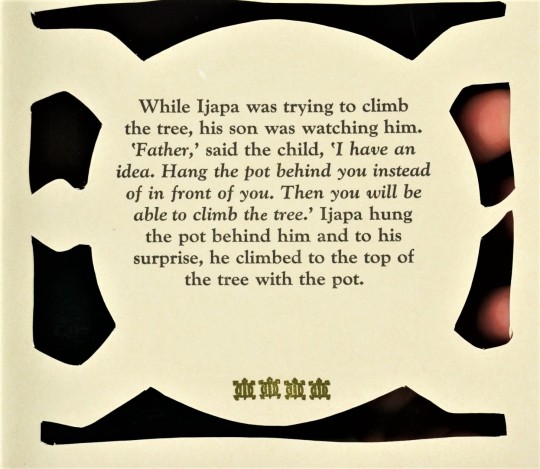
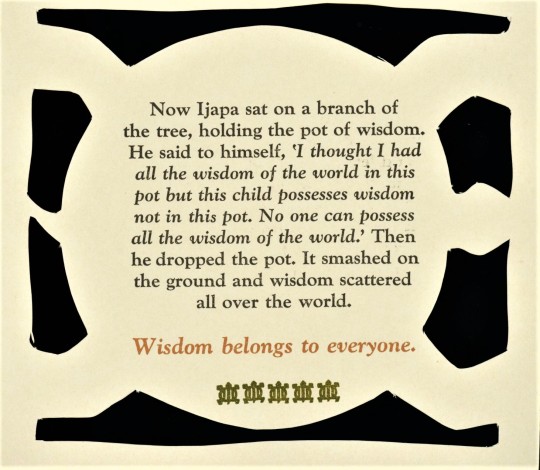
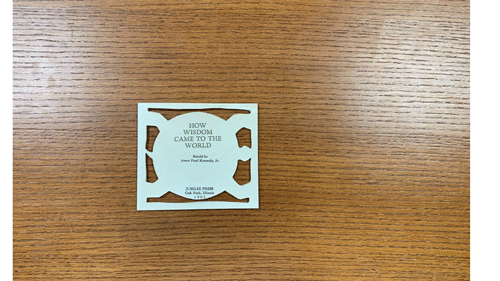
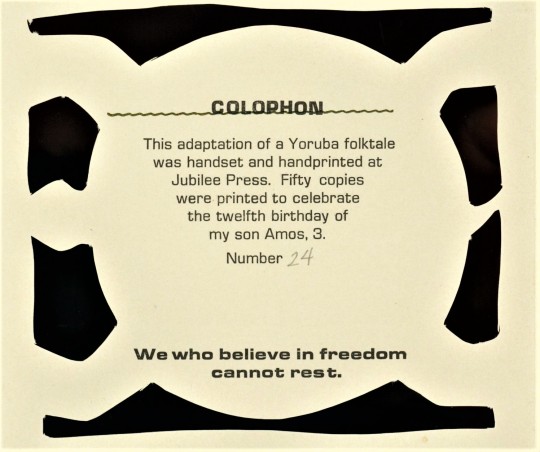
An African Fine Press Friday
As we continue to celebrate Black History Month, I was introduced to this handmade, hand-printed little book by noted African American book artist and letterpress printer Amos Paul Kennedy Jr. (b. 1948),entitled How Wisdom Came to the World, printed in Oak Park, Illinois at Kennedy’s Jubilee Press in 1992 in an edition of 50 copies.
The piece is an adaptation of a Yoruba folktale about a man named Ijapa who tried to keep all the wisdom of the world to himself and, with the help of his son, comes to realize that wisdom is for everyone. Ijapa literally means “That which moves around awkwardly” in reference to a turtle or tortoise, which is an animal trickster of Yoruba legend. Therefore, this accordion book is printed on pages that are hand-cut in the shape of a turtle. Although the pages are unnumbered, each page has has a different number of small, printed turtles to indicate the order it should be read. The accordion folds down into a 10 x 13 cm square that is housed in a handmade, four-fold amate “paper” enclosure with a turtle motif on the outside.
View more posts on the work of Amos Paul Kennedy, Jr.
View more Black History Month posts.
View more Fine Press Friday posts.
- Elizabeth V., Special Collections Undergraduate Writing Intern
#Black History Month#Fine Press Friday#Fine Press Fridays#Amos Paul Kennedy Jr.#How Wisdom Came to the World#Jubilee Press#Yoruba#African folktales#Ijapa#tricksters#accordion-fold books#turtles#turtle motif#handcutpaper#hand-cut paper#amate#Elizabeth V.
141 notes
·
View notes
Text

Wooden figurine representing the Yoruba deity Eshu. Artist unknown; 1880-1920. Photo credit: Wellcome Images/Wellcome Trust.
#art#art history#Africa#African#African art#West Africa#West African#West African art#Yoruba#Yoruba art#Nigeria#Nigerian art#folk art#indigenous peoples#indigenous art#African religions#Eshu#statuette#figurine#sculpture#woodwork#carving#19th century art#20th century art
150 notes
·
View notes
Text

#photography#quotes#cotonou#africa#benin#life#beninrepublic#iamromao#jeuneesthete#masked men#wear a mask#mask#gear#art#artwork#artists on tumblr#my art#visual art#art process#art work#love#culture#history#society#museums#heritage#yoruba#lagos#lagos nigeria#ouidah
5 notes
·
View notes
Text

Yemanjá is one of the most popular ‘orixás’, the deities or spiritual entities from the Afro-Brazilian religion of Candomblé, a syncretic religious fusion which has developed amongst the people brought to Brazil from Western Africa during colonial times. The personage of Yemanjá/Yemaya originally comes from the ancient Yoruba mythology and she is the goddess of the ocean.
61 notes
·
View notes
Text
Unveiling the African Essence in Eastern Philosophy
A Tribute during Black History MonthAs we embark on the celebration of Black History Month, it’s essential to recognize the myriad contributions of African descendants not just in shaping modern civilization but also in sculpting the contours of Eastern philosophy. The historical interweaving of African traditions with Eastern thought offers a rich narrative, highlighting a profound exchange of…

View On WordPress
#African influence#ancestral wisdom#ancient Egypt#Black History Month#Eastern Philosophy#Greek philosophy#Interconnectedness#nonduality#spiritual synergy#Transcendental Meditation#Ubuntu#Yoruba
8 notes
·
View notes
Photo

Yoruba Woman’s Ensemble: Buba (blouse), Iro (skirt), & Ipele (shoulder wrap)
Nigeria
c.1995
Royal Pavilion & Museums, Brighton & Hove
#ensemble#dress#fashion history#vintage fashion#yoruba#nigeria#1990s#traditional fashion#traditional clothing#non western fashion#africa#blue#white#aso oke#20th century#west africa#royal pavilion and museums#brighton and hove museums and art galleries
188 notes
·
View notes
Text

2 notes
·
View notes
Note
You mentioned Abeke's mom is named Ikenne- what does that mean? Also, did Chinwe name Irtike after her?
(Context: In the universe of my rewrite, Ikenne and Chinwe are sisters, making Abeke and Irtike cousins.)
I'm glad you asked! Ikenne (pronounced ee-keh-ney) is an Igbo name meaning "mother's strength" or "mother's power". It's not to be confused with the name Ikenna, which is the more popular male version and means "father's strength". Ikenne's name honours her mother, Abeke's grandmother. When she had children of her own, it took on a new meaning.
I had to think long and hard about a name for Abeke's mother. I wanted it to be Igbo like Chinwe's, have some meaning behind it and flow well with the names of her husband and daughters. I'm pretty happy with what I chose.
The meaning of Ikenne's name may seem ironic, given that sickness took her far too early. But she had a powerful influence on her youngest daughter, Abeke, and raised her to be a kind, honest person in the time that she had. Her physical body may not have been strong, but her spirit and her love for her children was, as is the memory of her that lives on in Abeke's heart.
Chinwe didn't name Irtike after Ikenne, no. If she had, she would have called her Ikenne or Nwannenne, which means "mother's sister". They just happen to both have I names.
#omg an ask ab my version of abeke's family. anon. GRIPPING you by the shoulders. thank you for giving me an excuse to talk ab them#i think ab them lots and lots and lots#it's always great to talk african names too#i did a lot of research into yoruba and igbo names while searching for a name for abeke's mom#i love all the languages and naming customs#my birth name is swahili did you know. bay lore#text#asks#a revised history of erdas#spirit animals#spirit animals books#spirit animals series#ikenne#abeke#chinwe#irtike
2 notes
·
View notes
Text
another spence idea that i won't write bc i cant write him
but i just always thought about spencer looking more into yoruba religions after the corazon episode, because the doctors say he doesnt have anything physical and he doesnt think its psychological, and that guy's Saint told him something Was Indeed Wrong and there was something comforting to him about that
so, atheist Spencer meets black reader from a yoruba religion and they bond and reader teaches and shows him stuff and he begins getting better and hes not sure what to believe, he think its placebo effect, but it works and maybe he begins discovering faith or maybe hes just relieved, but what matters is it worked and he met reader
#lari talks a lot#i cant write spencer and also all the terms i know for this are in portuguese#im literally lighting a candle for Mother Oyá rn but#i think a black writer with history with yoruba might be better with this#ALSO#WHEN SPENCER IS TALKING TO DORIAN HE MENTIONS HE KNOWS YORUBA LIKE IT WOULD BE PERFECT#spencer reid x reader
5 notes
·
View notes